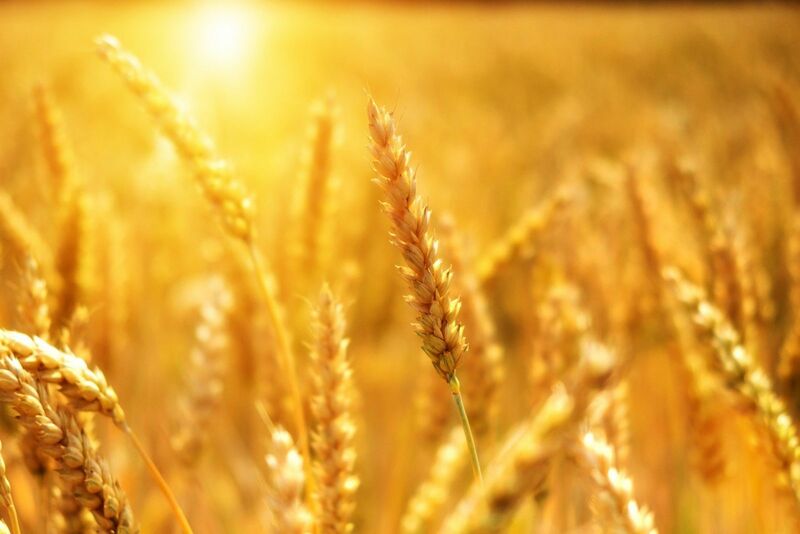
Grains feed the world, and the weather conditions across the fertile worldwide producing areas tend to dictate the path of least resistance of prices. Floods or droughts have historically caused crop yields to decline and prices to rise. In 2012, a drought pushed corn and soybean futures to record highs and soft red winter wheat futures to the highest price since the 2008 record peak. In 2022, the agricultural products that feed the world face a different challenge as the war between Russia and Ukraine is at the heart of Europe’s breadbasket. Russia and Ukraine are the world’s leading wheat exporters and significant exporters of corn and other agricultural commodities. In Q3, corn and soybean futures prices declined, but CBOT wheat moved higher. The sector moved lower and posted a double-digit percentage loss due to an over 40% loss in the oats futures arena.
We are now in the heart of the 2022 harvest season in anything but an ordinary year for the products that feed the world.
Wheat futures rally in Q3
Nearby CBOT soft red winter wheat futures moved 6.07% higher in Q3 and were 19.56% above the December 31, 2021, closing price on September 30, 2022. CBOT wheat moved 20.34% higher in 2021. Nearby CBOT wheat futures closed at $9.2150 per bushel on September 30, 2022.

The chart highlights that soft red winter wheat futures have made higher lows and higher highs since reaching a bottom of $3.8675 per bushel in August 2016. In March 2022, the futures rose to an all-time high of $13.6350 per bushel, surpassing the 2008 $13.4950 peak.
The KCBT hard red winter wheat futures posted a 4.51% gain in Q3 and were 23.71% higher over the first nine months of this year after posting a 32.81% gain in 2021. KCBT futures closed at the $9.9150 per bushel level on September 30, 2022.
The MGE Spring Wheat futures edged only 0.58% lower in Q3 and were 0.22% higher over the first three quarters of this year. In 2021, MGE wheat futures posted a 7.37% gain. The spring wheat settled at $9.82 per bushel on September 30.
The CBOT contract reflects the worldwide wheat market, which has been highly volatile because of the European war.
Corn declines in Q3 but is over 14% higher in 2022
Corn is food and fuel as it is the primary ingredient in US ethanol. Elevated gasoline prices in 2022 put upward pressure on ethanol. Nearby CBOT corn futures corrected 8.91% in Q3 but were still 14.20% higher over the first nine months of 2022. In 2021, corn posted a 22.57% gain. Corn futures were at the $6.7750 per bushel level on September 30.

The chart shows corn futures rose to a high of $8.2450 per bushel in April 2022 before correcting. Corn moved only 24.5 cents below the 2012 all-time high this year. At the $6.7750 level, corn was at its highest price since 2013.
Soybean prices fall but were still in positive territory for the year
Soybeans are processed into two products: soybean meal and soybean oil. The meal is a critical ingredient in animal feed, while the oil is required for cooking and biodiesel production. Nearby CBOT soybean futures declined 18.52% in Q3 but were still 2.71% higher over the first three quarters of 2022. The active month futures contract settled at the $13.6475 per bushel level on September 30. In 2021, soybean futures rose 1.03%.

The chart illustrates that beans rose to $17.5925 per bushel in February 2022, only 29.75 cents shy of the 2012 record peak.
Oats tank, but they soared last year- Rice prices remain on a bullish path
The worst-performing agricultural grain in Q3 and 2022 have been CBOT oat futures, which were 41.02% lower in Q3 and 42.90% lower over the first nine months of this year. However, oats rallied 89.33% in 2021 and only gave back half of those gains over the first three quarters of 2022. Oats were at the $3.90 per bushel level at the end of Q3.
Rough rice futures moved 4.54% higher in Q3 and were 17.36% above the 2021 closing price on September 30. Rough rice gained 15.29% in 2021. Rice futures settled at 17.17 per hundredweight on September 30.
While oat futures have corrected and are in a bearish trend, rice continues to make higher lows and higher highs.
The outlook for Q4 and beyond is cloudy
The path of least resistance for the agricultural products that feed and increasingly power the world remains cloudy as we head into Q4. The war in Ukraine is the most significant factor for the sector as supplies from Europe’s breadbasket remain questionable. Moreover, since Russia is a world-leading fertilizer producer and exporter, farmers worldwide have experienced soaring prices and declining supplies of fertilizers required to sustain crop production.
The war is bullish for grain and oilseed markets, but an end to the conflict could cause a sudden and brutal price correction for many of the sector members. Meanwhile, each quarter the worldwide population grows by around twenty million people and is approaching the eight billion level. Each year the world requires more gains and oilseeds to feed and fuel a growing number of people. Farmers worldwide need to produce more crops to satisfy requirements as the demand side of the grain balance sheet is ever-growing.
More Grain News from Barchart
- Morning Weakness from Thursday Soy Futures
- Morning Wheats Red
- Corn Red for Export Sales
- Wheats End Off Highs


/Super%20Micro%20Computer%20Inc%20logo%20on%20building-by%20Poetra_RH%20via%20Shutterstock.jpg)



